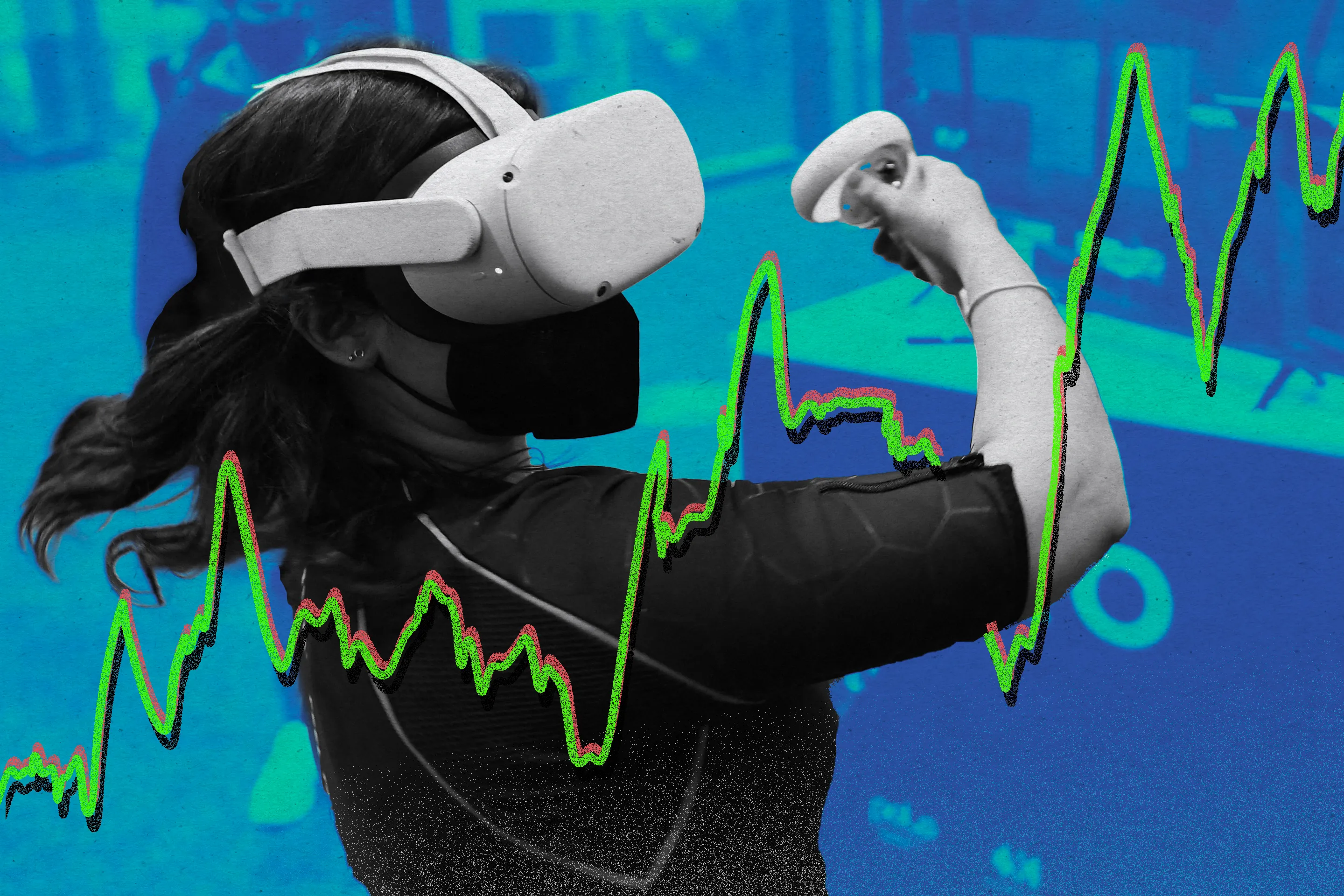Is investing in Metaverse the next big thing in 2022?

Is investing in Metaverse the next big thing?
Central investment banks Goldman Sachs, Morgan Stanley, and Citibank predict that the market for the Metaverse will be worth $40–60 billion in 2021 and $8–13 trillion by 2030.
Should we, the comparatively passive, non-control investors, not pay close attention to the growth vector if company executives and investment value producers like Mark Zuckerberg and Satya Nadella, whose job is to create the future, are investing in the Metaverse?
While the term “Metaverse” may sound like just another fad or buzzword, we are examining the development of the Internet through its various stages and may shed some light on the underlying technology, consumer goods, customer value, and business models that generate cash flow that has changed. This will make it easier to imagine what the Metaverse might look like in a few years.
Why did fund managers chase the Internet at its inception?
The ARPANET, the predecessor to the Internet, was created in 1969 as part of a defence effort to create a decentralized communication system that would be impossible for the adversary to destroy because there was no one point of concentration. It was utilized for information sharing and communication. The browser for using the Internet was provided by Web 1.0, which existed between 1993 and 2007. A desktop computer was the usual device used. The goal was to use the Internet to consume information. This era ended with the dominance of Google, which replaced older directory portals like Yahoo and Amazon, which replaced traditional brick-and-mortar stores. Digital advertising and e-commerce were the main drivers of the internet market.
Starting in 2007, Web 2.0, the next iteration, was built on 4G, smartphones, cloud computing, and social networking apps. The focus of Web 2.0 is content creation and consumption. Web 2.0’s primary sources of income continue to be digital marketing and e-commerce. Today, the S&P 500 is dominated by technology companies, accounting for approximately 40% of the companies in the information technology, communication services, and consumer discretionary sectors.
What exactly is the Metaverse, and what are our options there?
You’ve probably heard how the Metaverse will bring a new era of digital connectedness, virtual reality (VR) experiences, and e-commerce. Tech firms are placing significant bets on it: Microsoft purchased Activision Blizzard for a whopping US$68.7 billion, reflecting the company’s goal to strengthen its position in the interactive entertainment market.
The parent business of Facebook had previously changed its name to Meta, which was a crucial component of founder Mark Zuckerberg’s lofty plans to reinvent the social media site as “a metaverse company, building the future of social connectedness.”
However, non-tech companies are also scrambling to get in on the first floor, with Nike registering new trademarks to sell virtual Air Jordans and Walmart getting ready to use its cryptocurrency and non-fungible tokens to sell virtual goods online (NFTs).
As a professor of journalism who has studied the potential of immersive media, I concur that the Metaverse presents transformative possibilities. But I also understand that its path to widespread adoption has intrinsic difficulties. What exactly is the Metaverse, and why is it being touted as a revolutionary new technology?
The metaverse entry

An integrated network of 3D virtual worlds is the Metaverse. Users enter these worlds through a virtual reality headset, navigating the Metaverse with their eye movements, feedback controls, or voice commands. The user is submerged by the headgear, producing a phenomenon called presence, achieved by simulating the genuine physical experience of being present.
We may look at well-known massively multiplayer virtual reality games like Rec Room or Horizon Worlds to see the Metaverse in action. Players utilize avatars to interact with one another and change their surroundings.
But the other uses outside of games are astounding. Concerts are being held in the Metaverse by musicians and entertainment companies. Top teams like Manchester City are developing virtual stadiums so spectators can watch games and presumably buy virtual goods. The sports business is following suit.
Online education and governmental services will likely present the Metaverse with its most far-reaching prospects.
The common understanding of the Metaverse is as follows: a virtual reality (VR)-based world separate from our physical one where individuals can interact and participate in an infinite number of virtual activities, all supported by a different digital economy.
Additional to virtual reality
But before the Metaverse is widely and universally adopted, there are obstacles to be overcome. And the “virtual” aspect of this cosmos is a significant obstacle.
Although VR is a vital component of the metaverse recipe, wearing a VR headset is not (and should not be) a requirement for entry into the Metaverse. Anyone with a computer or smartphone can theoretically access a metaverse experience like Second Life.
Given that virtual reality is still struggling to find a foothold with customers providing widespread accessibility is essential to making the metaverse function.
In a short time, the VR sector has experienced notable innovations. A few years ago, consumers interested in home VR had to pick between pricey, tethered computer-based systems and cheap but incredibly constrained smartphone-based headsets.
The Quest line from Meta, which has quickly risen to the top of the home VR market, is one example of the economical, extremely high-quality, portable wireless headsets that have just entered the market. The device costs less than most video gaming consoles, has impressive graphics, and has a more extensive content library than ever. Why then do so few people use VR?
On the one hand, the market for VR headsets has been expanding globally, and 2021 proved to be a successful year for headset producers, thanks to their most robust sales since the flurry of high-profile VR gadget launches in 2016. However, they only managed to sell about 11 million devices globally.
Since only 28% of individuals who own VR headsets are thought to utilize them daily, it can be not easy even to get people to use their gadgets. Numerous tech experts have noted that the long-promised mainstream VR revolution has generally fallen short of expectations.
Metaverse: the next central investment concept?
Web 3.0, or the Metaverse, is the next phase. The Metaverse is a virtual world that allows users to create avatars or three-dimensional representations of themselves in the virtual world. These avatars are persistent and transfer from one platform to another. Instead of media, the individual is the main focus. The digital environments where the avatars reside can develop, and people can create items there, own them, and profit monetarily from them.
Digital currencies based on blockchains may offer a means of conducting financial transactions. However, traditional digital payments may also be successful. This might make it possible for people to socialize and interact with their friends and family in the Metaverse.
Additionally, they may attend digital events, go to concerts, or even engage in virtual sports competitions.
Peripheral vision, body language, and facial expressions can detect the presence. In the Metaverse, people finally could touch and smell things. Similarly, business meetings might occur in the 3-dimensional world while participants use their respective avatars for work.
AR/VR devices support the user experience of the Metaverse. It would also be supported by cloud infrastructure and several other back-end technologies that enable the production of avatars or three-dimensional environments. The Metaverse has a robust technological foundation thanks to gaming engines.
Investment concepts and the Metaverse
Popular consumer companies have already started using these platforms, and the competition to establish a presence in the Metaverse has heated up. Major financial institutions, including Goldman Sachs, Morgan Stanley, and Citibank, predict that the market for the Metaverse will be worth $40–60 billion in 2021 and $8–13 trillion by 2030.
How can one invest in the Metaverse and take advantage of its explosive growth, which according to the projections mentioned above, might reach a CAGR of up to 70%? Many technology firms are now making contributions to the Metaverse.
All of these industries—including devices, gaming, hardware, specialized chips, cloud, artificial intelligence, blockchain, payments technologies, digital marketing, networking, and cyber security—offer exposure to the Metaverse growth vector, from well-known Big Tech firms to lesser-known firms working on AR/VR or immersive technologies.
One should understand that this growth vector is becoming increasingly recognized as a scientific investor. The companies with prospective or current strength in the Metaverse technologies that Mr Market has yet to remember should be the focus of the scientific investor. Given their current and projected cash flows, some companies are mispriced. Additionally, they have cutting-edge Metaverse technologies or ambitions. A few of these businesses are included in the portfolio baskets on some of the biggest international stock trading websites targeted toward Indian investors. Another way to gain exposure is through a small case platform’s INR or rupee-based portfolio of technology stocks with Indian listings.
The fact that this growth vector is becoming increasingly recognized is something that a scientific investor should be aware of. The enterprises with prospective or already strong positions in Metaverse technology but currently unacknowledged by Mr Market should be the focus of the scientific investor. According to their past and projected cash flows, some corporations are mispriced. They also have cutting-edge Metaverse technologies or plans. A few of these businesses are included in the baskets of portfolios on some of the most well-known worldwide stock trading platforms targeted at Indian investors. A portfolio of technology stocks with Indian listings on the small case platform might be used to gain exposure.
Of course, one should base any investment decision on their investing goals, risk tolerance, and time horizon. The Metaverse growth vector can only be a satellite allocation and not a core allocation because of its high-risk, high-return nature and is still in its early stages. Or, it might be a component of a core portfolio made up of many growth vectors. The allotment may get more extensive and significant if the Metaverse economy expands and fuses with the leading economy.
The Metaverse portfolio should ideally be dynamic, with underpriced companies entering the portfolio and overpriced companies leaving it. This offers the advantages of Metaverse economic growth and alpha-rating benefits.
The Revolution of the Metaverse

Although the idea of a metaverse is relatively new, there is a lot of confusion about its definition. All definitions, however, assume that the entry point to the Metaverse will be new-age technologies like extended reality (XR), a combination of augmented, virtual, and mixed reality settings that are accessible and interactive in real-time. This cutting-edge technology has heralded innovative applications in sectors including gaming and entertainment, enterprise solutions and simulations, and military and defence.
Furthermore, because blockchain enables verifiable claims of ownership and the transferability of digital assets, businesses can now anticipate it to play a crucial role in developing the Metaverse.
To enable new types of social and economic engagement, it looks that XR and blockchain will work together to create apps that progressively link our physical and digital identities.
The metaverse industry is growing in lockstep with the development of cutting-edge technologies. Fortune Business Insights projects that the worldwide metaverse market will increase from $100.27 billion in 2022 to $1,527.55 billion in 2029, with a CAGR of 47.6%. The study also showed that the COVID-19 epidemic increased demand for metaverse experiences across all geographic areas, including Europe, the United States, and the Asia Pacific.
Blockchain and Cryptocurrency’s Effect on Investment
Currently, cryptocurrencies and the blockchain are inseparably linked to the Metaverse. In part, this is because intelligent contacts and non-fungible tokens (NFTs) have the potential to be used to securely swap and buy goods across the Metaverse.
On the other hand, the Metaverse is developing as a marketplace where people may acquire and create items using tokens. In this case, “metaverse cryptocurrencies” help firms invest and expand simultaneously. The idea uses blockchain technology to provide several services, including secure transactions, easy accessibility, and digital governance. Global market expansion is probably driven by increased investment in virtual digital world services built on Blockchain technology.
Businesses are looking for investment opportunities now that the Metaverse has become widely accepted to grow their brands and increase revenue. The subsequent development in internet technology is the Metaverse. The Metaverse offers a wealth of opportunities and has become a wise investment choice for the future, thanks to its extraordinary disruptive qualities. Additionally, a surge in platform utilization and increasing investment across industries will emphasize the virtual world’s explosive development potential.
The potential to commercialize virtual land through games, events, word spaces and other lucrative endeavours significantly impacts the Metaverse market, just as it has on traditional marketplaces. Numerous businesses are already hailing Metaverse as the newest invention to watch and seeking to make investments in virtual reality. On the other hand, the Metaverse is altering the world and generating a stir everywhere.
The Indian Roadmap for the Future
Despite being a novel idea, the Metaverse is changing our time and will only become more critical as technology advances. The near future will bring about changes in our natural world in many ways and may even replace some real-world activities as the notion of the Metaverse proceeds with the blockchain-enabled Web3 technology.
The development of the virtual economy, which depends on video games and virtual worlds, may be significantly influenced by the future of the Metaverse with little disruption. In the metaverse industries of clothing, footwear, and other items, several non-fungible token (NFT) enterprises have already put their NFTs to use.
An increasing number of NFT players are interested in the opportunity to buy virtual properties in such games and then rent or sell them for a profit.
It is only a matter of time until other entities follow suit, as notable players have already entered this space and strongly suggested that it might be the new future. It has the potential to dramatically expand the Metaverse’s boundaries and reveal enormous amounts of value that investors and consumers alike had no idea existed. The Metaverse’s future is likewise reliant on the concept of uninterrupted, open operation.
Should You Invest in the Stock Market, Cryptocurrency, or the Metaverse?

The stock market has traditionally been a top option for investors looking for financial growth. But in recent years, two new investing alternatives have opened up fascinating possibilities for risk-taking investors.
While related, the Metaverse and cryptocurrencies are separate asset classes with the potential for high returns and the risk of total loss. However, there is still a great deal of disagreement regarding whether they are wise investment choices, along with their dangers and benefits. The stock market, cryptocurrencies, and the Metaverse each have different investment characteristics. We also discuss which kind of investors would be best suited for each.
Putting money into the Metaverse
The Metaverse has perhaps been the most talked-about asset class in recent months, but many investors are still unsure. There is no single definition of “the metaverse” as one factor. In essence, it’s an online environment that combines virtual reality, social networking, and augmented reality, frequently supported by cryptocurrencies. Although gamers and developers have been using this virtual world for years, it is quickly developing into a parallel online reality where actual financial transactions are possible.
According to Andrew Kiguel, CEO of Tokens.com, the virtual property is currently a hot investment in the Metaverse, with prices rising by around 500% in recent months. Even in the same virtual neighbourhood as musician Snoop Dogg, one investor shelled out $450,000 for a piece of property. This might be the beginning. According to analysts at Bloomberg Intelligence, the value of the Metaverse is predicted to reach $800 billion by 2024, while according to Morgan Stanley analyst Brian Nowak, it may get a peak of $8 trillion.
Facebook, the industry leader in social media, even changed the name of the entire business to Meta Platforms, demonstrating its conviction in Metaverse’s great potential for the future. Investors should be aware that while the Metaverse has unique possibilities, it might result in massive gains or catastrophic losses.
Best suited for: Risk-takers looking to invest in “the next big thing.”
Worst for Conservative investors seeking largely predictable results
Investing in cryptocurrency
Some cryptocurrency investors have become millionaires, but it has also cost many people their money. The two most valuable cryptocurrencies are Bitcoin and Ethereum, with market capitalizations of over $425 billion and $145 billion, respectively. No other cryptocurrency has a market cap greater than roughly $70 billion at this time, and the majority of the thousands of others have tiny market caps.
Because they have yet to demonstrate their widespread utility in transactions in the real world, cryptocurrencies are very volatile. Some speculators believe that cryptocurrency will eventually replace or coexist with fiat money like the US dollar. Still, its true worth might only become apparent if the Metaverse establishes itself as a functional system. Cryptocurrency is still a very speculative investment that could either produce enormous profits or lose all of its value. It is most suitable for investors who can handle significant price fluctuations and risk losing their entire investment.
Best for: Highly risk-tolerant investors with funds they can afford to lose are the best candidates.
Worst for: Those with low incomes or who cannot handle volatility
Purchasing stock market assets
The stock market is remarkably steady compared to cryptocurrencies, despite once being one of the asset classes with the most volatility. The average annual stock market correction, or 10% selloff, occurs at least once a year, yet the market’s long-term returns remain remarkably stable. The S&P 500 stock market index has never had a 20-year rolling period with a negative return.
Because of this, stock market index investment is far less dangerous than it initially appears for long-term investors. Additionally, your portfolio might double every seven years with a long-term average return of around 10% yearly. You’ll only need the mental toughness to endure the occasional 10% to 20% decline in market value, which has always turned out to be a long-term purchasing opportunity for patient investors.
Best for: Investors seeking to grow their wealth over the long run while enduring some volatility
Worst for: Investors with short-term financial objectives or those looking to preserve capital
The bottom line

The stock market, cryptocurrencies, and the Metaverse all have the potential to provide enormous profits, but they also come with a significant risk, especially in the short term. The stock market is the least dangerous of the three for long-term investors since it has a proven track record and is supported by businesses that generate substantial revenues and earnings.
Currently supported only by the aspirations and ambitions of investors, cryptocurrency and the Metaverse can only be considered speculative investments. Both of those investments may have a solid platform for expansion if the Metaverse does succeed in developing into a functional parallel world run on bitcoin.
Investors should be aware of the dangers and refrain from investing their whole retirement fund in these speculative asset classes.




